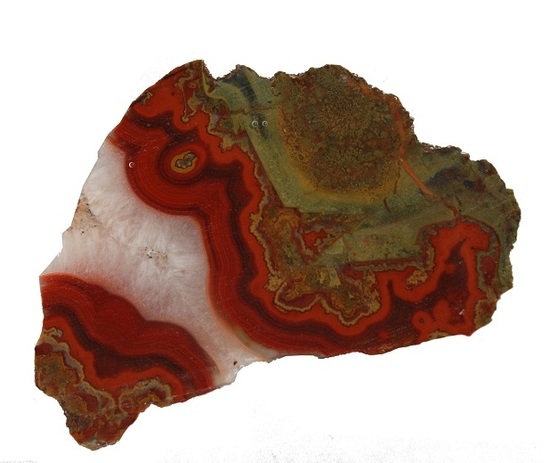Agates from Kerrouchen (The Atlas Mountains, Morocco): Textural Types and Their Gemmological Characteristics
Abstract
:1. Introduction
2. Geological Setting
3. Experimental Section
3.1. Microscopic Analyses
3.2. Raman Spectroscopy
3.3. X-Ray Fluorescence
4. Results
4.1. Microscopic Observations
4.2. Raman Microspectroscopy
4.3. X-Ray Fluorescence
5. Discussion
Acknowledgments
Author Contributions
Conflicts of Interest
References
- Moxon, T.; Nelson, D.R.; Zhang, M. Agate recrystallization: Evidence from samples found in Archaean and Proterozoic host rocks, Western Australia. Aust. J. Earth Sci. 2006, 53, 235–248. [Google Scholar] [CrossRef]
- Heaney, P.J. A Proposed Mechanism for the Growth of Chalcedony. Contrib. Mineral. Petrol. 1993, 115, 66–74. [Google Scholar] [CrossRef]
- Dumańska-Słowik, M.; Natkaniec-Nowak, L.; Wesełucha-Birczyńska, A.; Gaweł, A.; Lankosz, M.; Wróbel, P. Agates from Sidi-Rahal, in the Atlas Mountains, Morocco: Gemmological characteristics and proposed origin. Gems Gemol. 2013, 49, 148–159. [Google Scholar] [CrossRef]
- Götze, J. Agate-fascination between legend and science. In Agates III; Zenz, J., Ed.; Bode Verlag GmbH: Salzhemmendorf, Germany, 2011; pp. 19–133. [Google Scholar]
- Mayer, D. Erlesene Achate. Exqusite Agates; Bode Verlag: Haltern, Germany, 2013; pp. 1–424. (In German) [Google Scholar]
- Jahn, S.; Bode, R.; Lycberg, P.; Medenbach, O.; Lierl, H.J. Marokko—Land der Schönen Mineralien und Fossilien; Bode Verlag: Haltern, Germany, 2003; pp. 1–536. (In German) [Google Scholar]
- Zenz, J. Achat-Schätze, 1st ed.; Mineralien Welt: Salzhemmendorf, Germany, 2005; pp. 288–301. (In German) [Google Scholar]
- Zenz, J. Achate; Bode Verlag: Haltern, Germany, 2005; pp. 1–656. (In German) [Google Scholar]
- Zenz, J. Achate II; Bode Verlag: Haltern, Germany, 2009; pp. 1–656. (In German) [Google Scholar]
- Gottschaller, S. Wichtige Mineralfundstellen in Marokko. In Marokko; ExtraLapis No. 42; Weise Verlag: Munich, Germany, 2012; pp. 76–98. [Google Scholar]
- Mayer, D. “Nicht nur” Achate in Marokko. ExtraLapis 2012, 42, 22–25. (In German) [Google Scholar]
- Mohr, C. Zur aktuellen Achat-Fundsituation in Marokko. Miner. Welt 2012, 23, 82–89. (In German) [Google Scholar]
- Schwarz, D. Marokko-und dieses Mal keine Achate. Miner. Welt 2012, 23, 85–88. (In German) [Google Scholar]
- Choubert, G.; Marais, J. Geologie du Marocco. In Proceedings of the 19th International Geological Congress, Algiers, Algeria, 8–15 September 1952 .
- Laville, E. Role of the Atlas Mountains (northwest Africa) within the African-Eurasian plate-boundary zone: Comment. Geology 2002, 30, 1–95. [Google Scholar] [CrossRef]
- Arboleya, M.L.; Teixell, A.; Charroud, M.; Julivert, M. A structural transect through the High and Middle Atlas of Morocco. J. Afr. Earth Sci. 2004, 39, 319–327. [Google Scholar] [CrossRef]
- Wróbel, P.; Czyżycki, M.; Furman, L.; Kolasiński, K.; Lankosz, M.; Mrenca, A.; Samek, L.; Węgrzynek, D. LabVIEW control software for scanning micro-beam X-ray fluorescence spectrometer. Talanta 2012, 93, 186–192. [Google Scholar] [CrossRef] [PubMed]
- Legodi, M.A.; De Wall, D. The preparation of magnetite, goethite, hematite and maghemite of pigment quality from mill scale iron waste. Dyes Pigments 2006, 74, 161–168. [Google Scholar] [CrossRef]
- Jehlicka, J.; Beny, C. First and second order Raman spectra of natural highly carbonified organic compounds from metamorphic rocks. J. Mol. Struct. 1999, 480, 541–545. [Google Scholar] [CrossRef]
- Laufente, B.; Downs, R.T.; Yang, H.; Stone, N. The power of databases: The RRUFF project. In Highlights in Mineralogical Crystallography; Armbruster, T., Danisi, R.M., De Gruyter, W., Eds.; W. De Gruyter: Berlin, Germany, 2015; pp. 1–30. [Google Scholar]
- Gӧtze, J.; Nasdala, L.; Kleeberg, R.; Wenzel, M. Occurrence and distribution of “moganite” in agate/chalcedony: A combined micro-Raman, Rietveld, and cathodoluminescence study. Contrib. Mineral. Petrol. 1998, 133, 96–105. [Google Scholar]
- Swamy, V.; Muddle, B.C.; Dai, Q. Size-dependent modifications of the Raman spectrum of rutile TiO2. Appl. Phys. Lett. 2006, 89, 1–3. [Google Scholar] [CrossRef]
- Gunasekaran, S.; Anbalagan, G.; Pandi, S. Raman and infrared spectra of carbonates of calcite structure. J. Raman Spectrosc. 2006, 37, 892–899. [Google Scholar] [CrossRef]
- Parthasarathy, G.; Kunwar, A.C.; Srinivasan, R. Occurrence of moganite-rich chalcedony in the Deccan flood basalts, Killari, Maharashtra, India. Eur. J. Mineral. 2001, 13, 127–134. [Google Scholar] [CrossRef]
- Pop, D.; Constantina, C.; Tătar, D.; Kiefer, W. Raman spectroscopy on gem-quality microcrystalline and amorphous silica varieties from Romania. Stud. UBB Geol. 2004, 49, 41–52. [Google Scholar] [CrossRef]
- Moxon, T.; Rios, S. Moganite and water content as a function of age in agate: An XRD and thermogravimetric study. Eur. J. Mineral. 2004, 16, 269–278. [Google Scholar] [CrossRef]
- Moxon, T.; Reed, S.J.B. Agate and chalcedony from igneous and sedimentary hosts aged from 13 to 3480 Ma: A cathodoluminescence study. Mineral. Mag. 2006, 70, 485–498. [Google Scholar] [CrossRef]
- Dumańska-Słowik, M.; Natkaniec-Nowak, L.; Kotarba, M.J.; Sikorska, M.; Rzymełka, J.A.; Łoboda, A.; Gaweł, A. Mineralogical and geochemical characterization of the “bitumineous” agates from Nowy Kościół (Lower Silesia, Poland). Neues Jahrb. Miner. Abh. 2008, 184, 255–268. [Google Scholar] [CrossRef]
- Dumańska-Słowik, M.; Wesełucha-Birczyńska, A.; Natkaniec-Nowak, L. Inclusions in topaz from miarolitic pegmatites of the Volodarsk-Volynski Massif (Ukraine)—A Raman spectroscopic study. Spectrochim. Acta A 2013, 109, 97–104. [Google Scholar] [CrossRef] [PubMed]
- Wesełucha-Birczyńska, A.; Natkaniec-Nowak, L. A Raman microspectroscopic study of organic inclusions in “watermelon” tourmaline from Paprok mine (Nuristan, Afghanistan). Vib. Spectrosc. 2011, 57, 248–253. [Google Scholar] [CrossRef]
- Wesełucha-Birczyńska, A.; Słowakiewicz, M.; Natkaniec-Nowak, L.; Proniewicz, L.M. Raman microspectroscopy of organic inclusions in spodumens from Nilaw (Nuristan, Afghanistan). Spectrochim. Acta A 2011, 79, 789–796. [Google Scholar] [CrossRef] [PubMed]
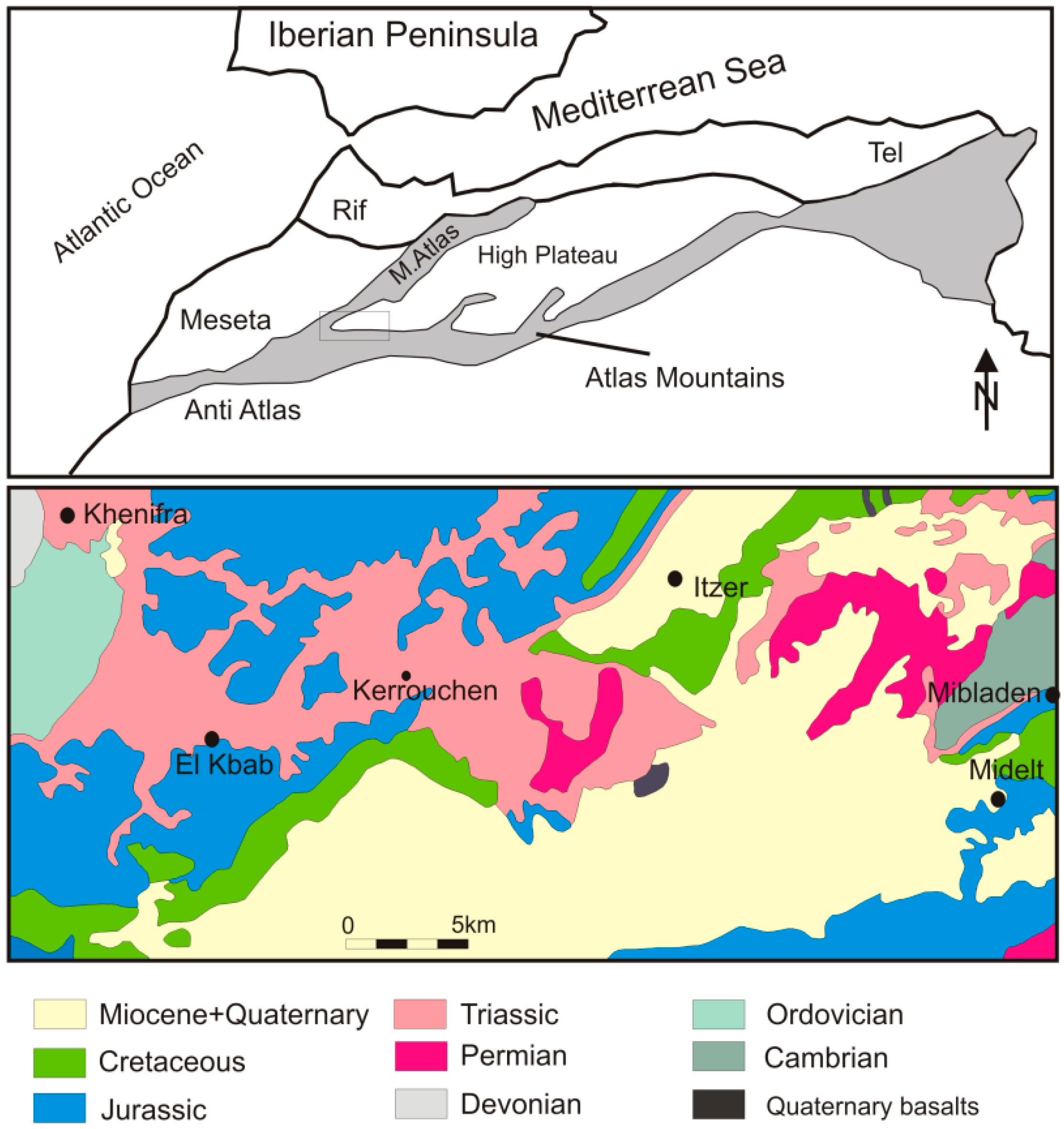

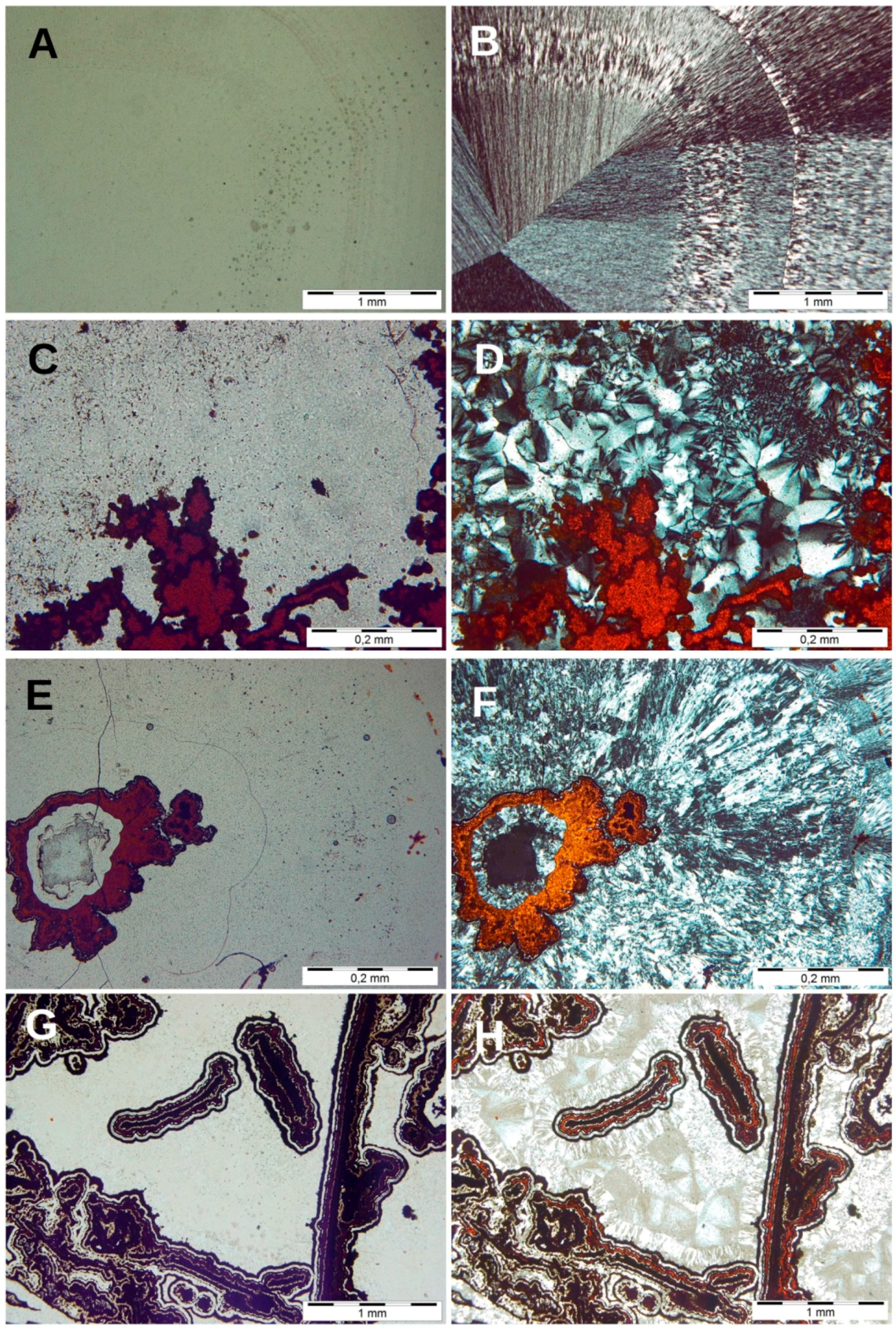
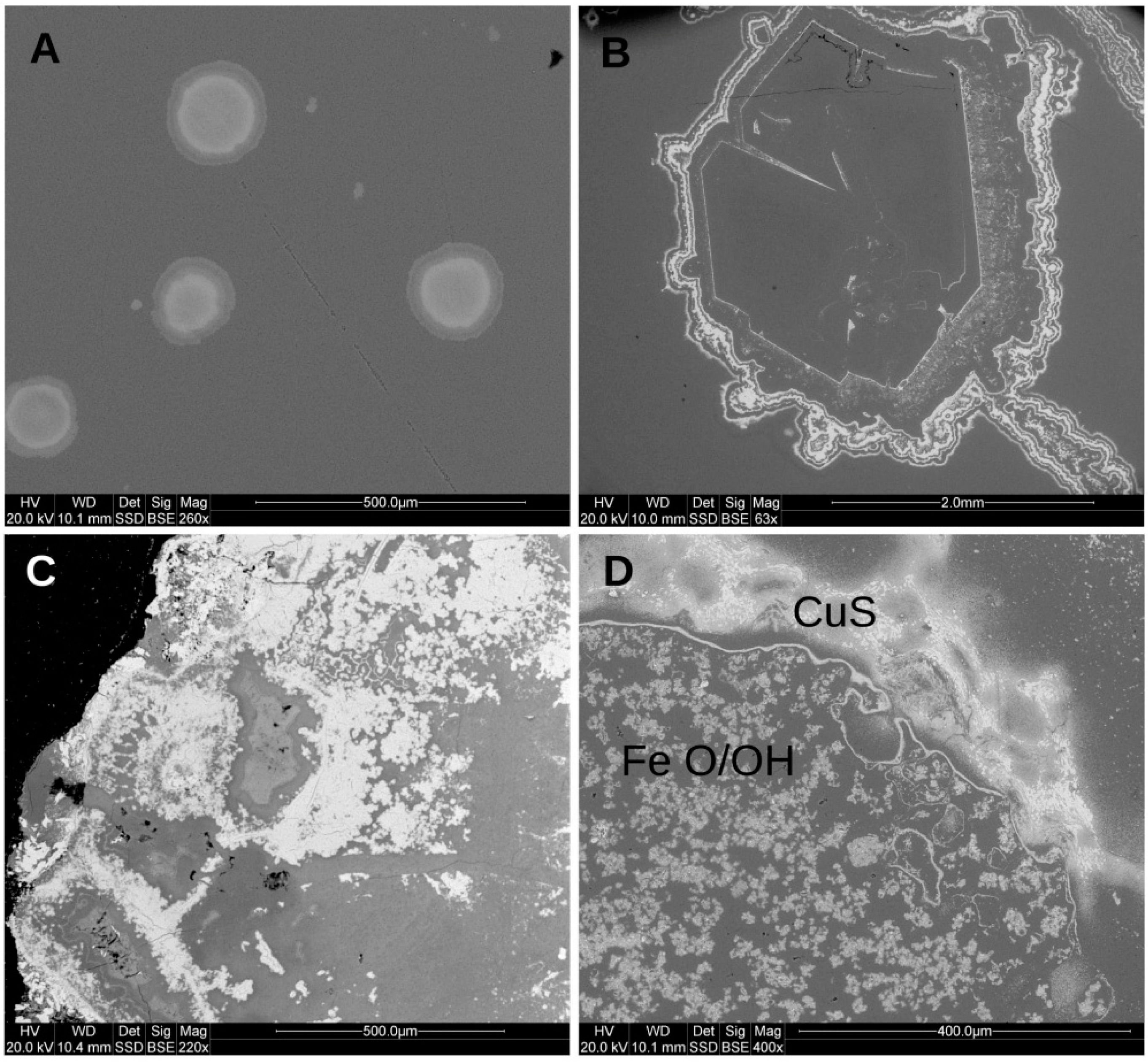

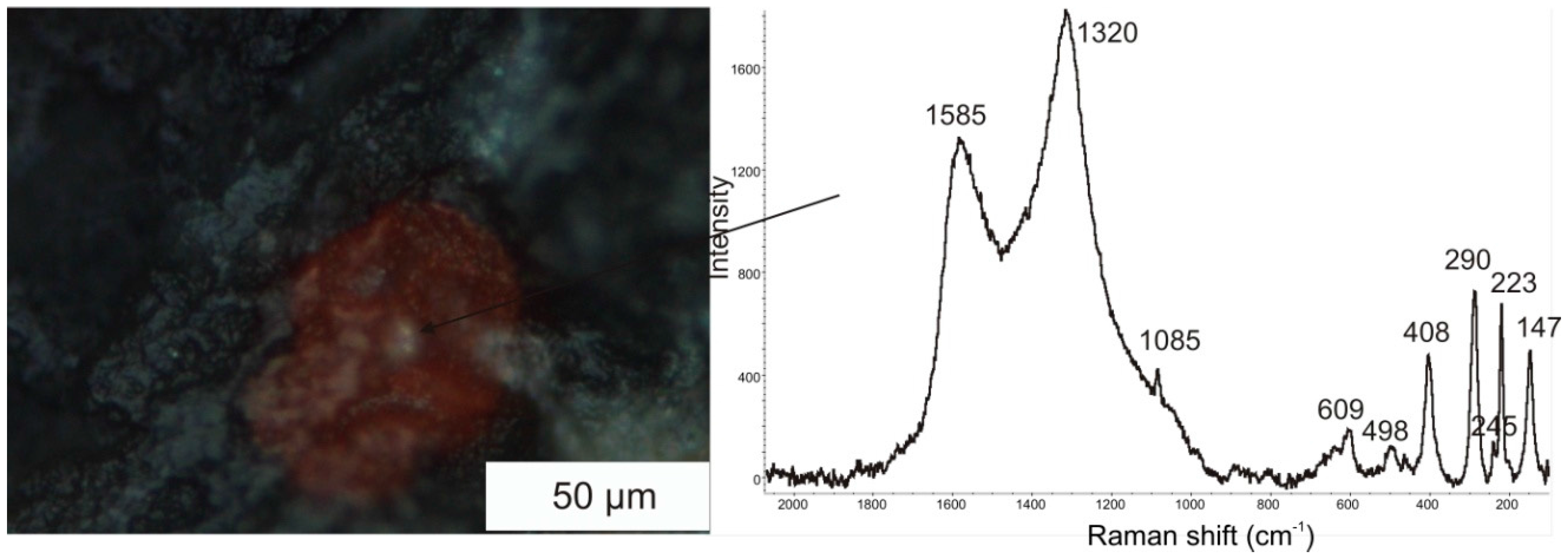

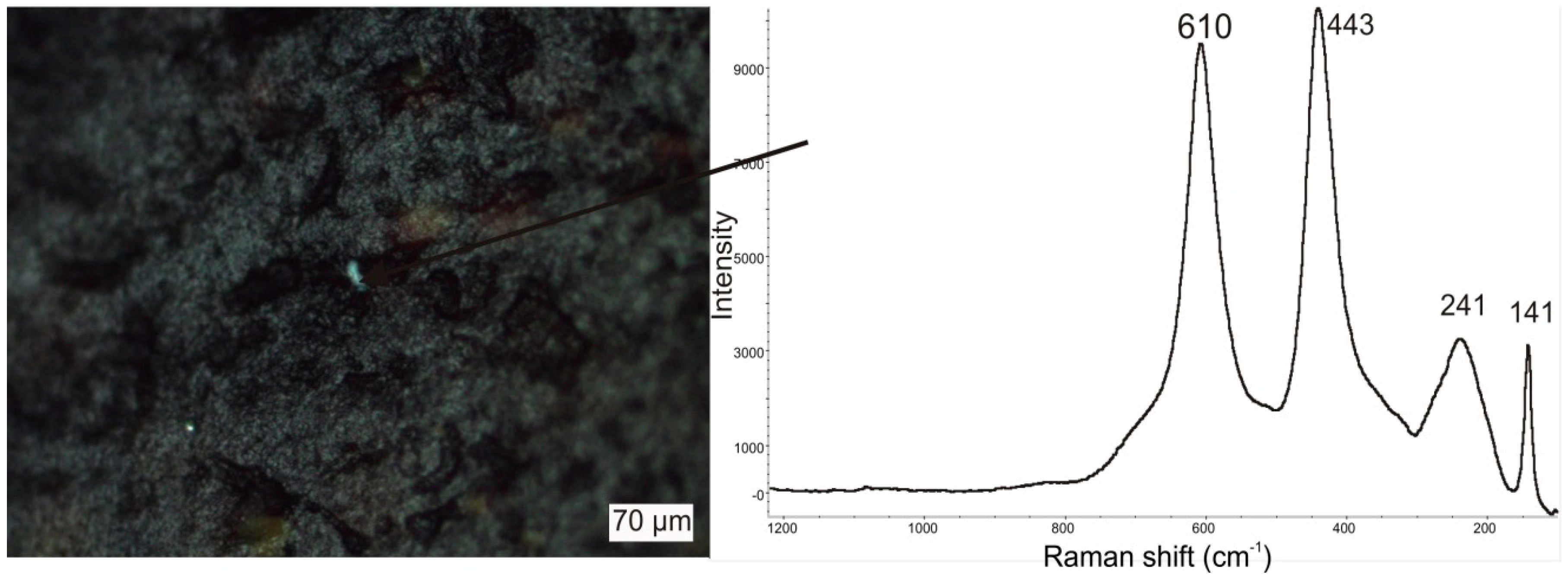
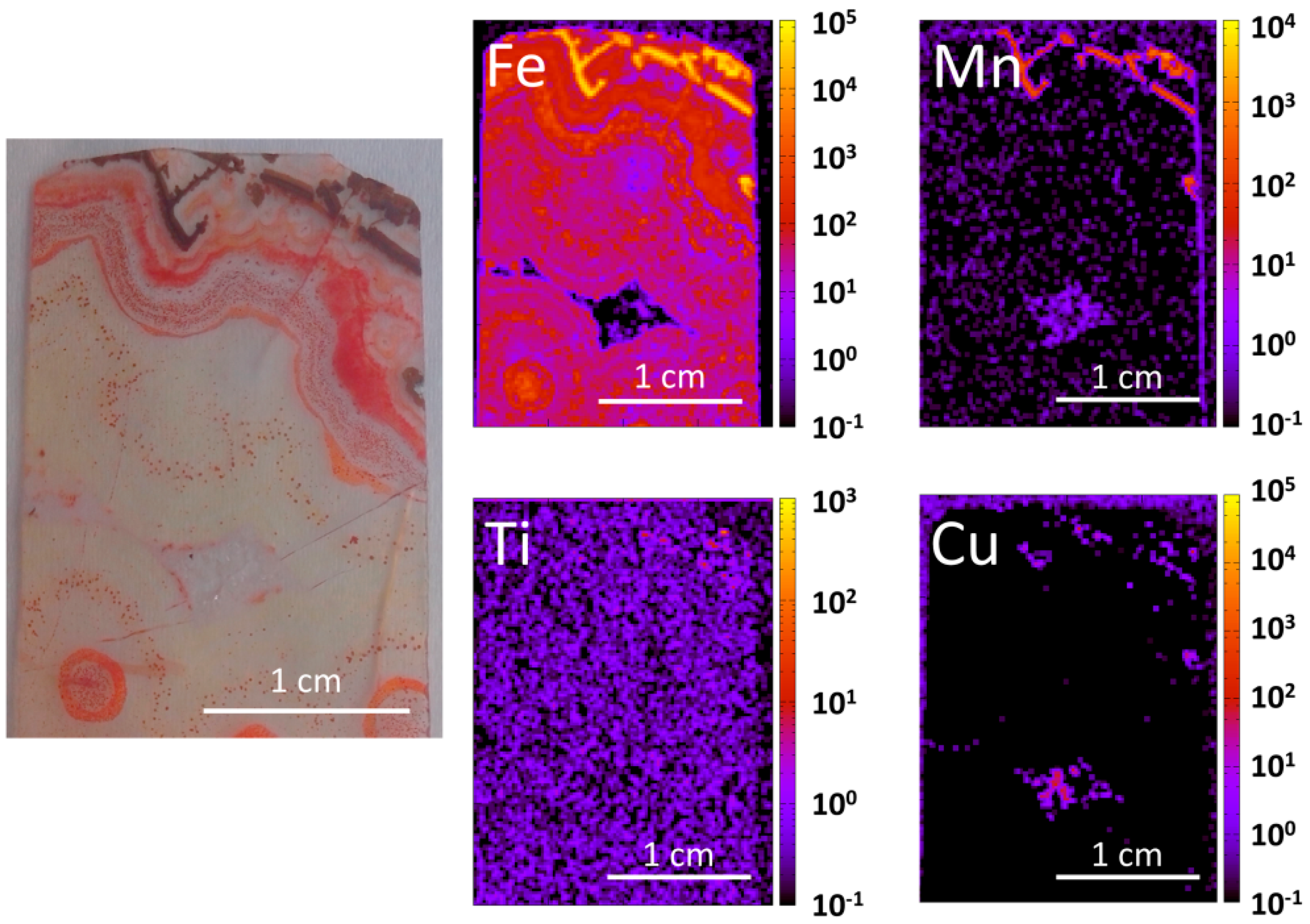
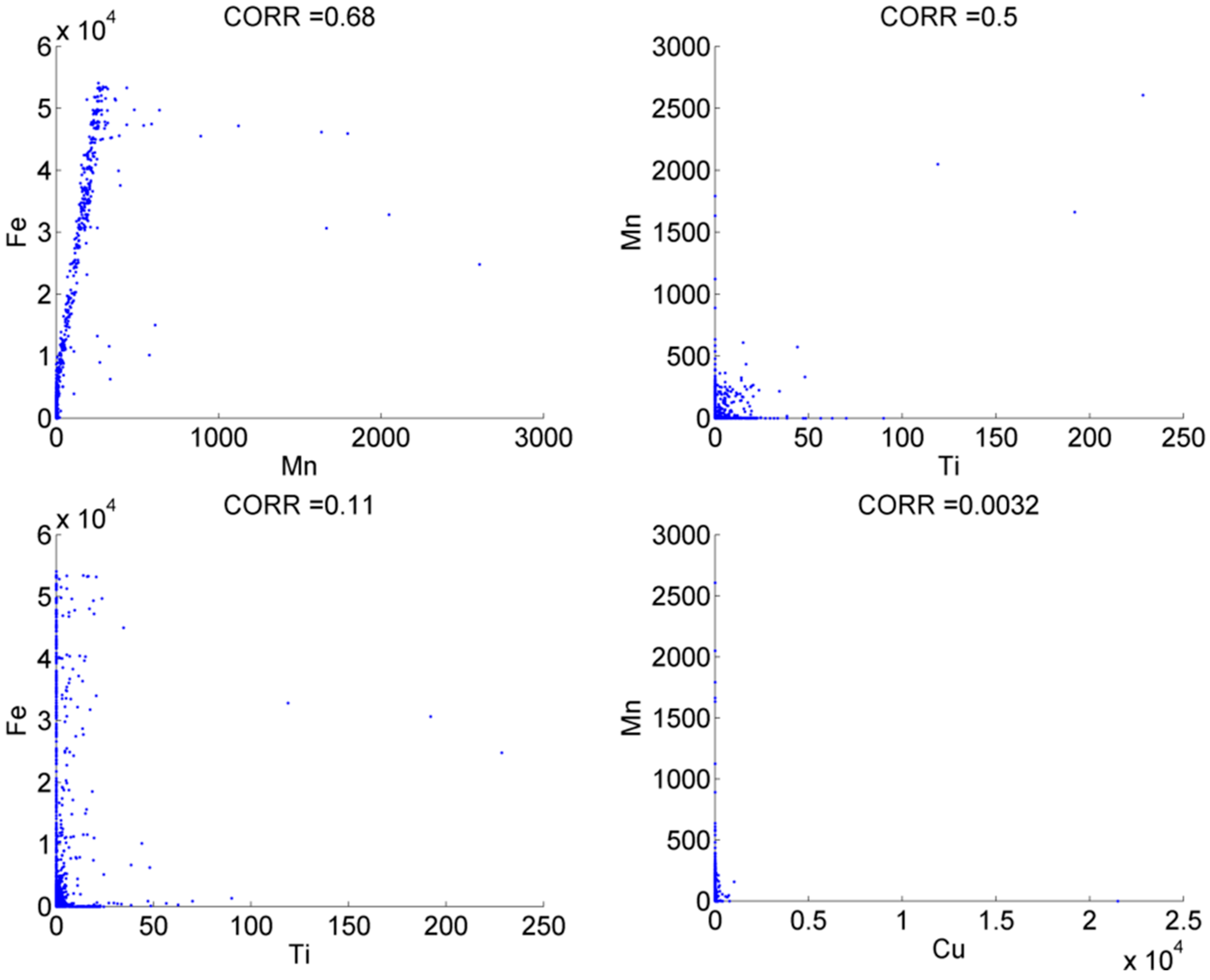
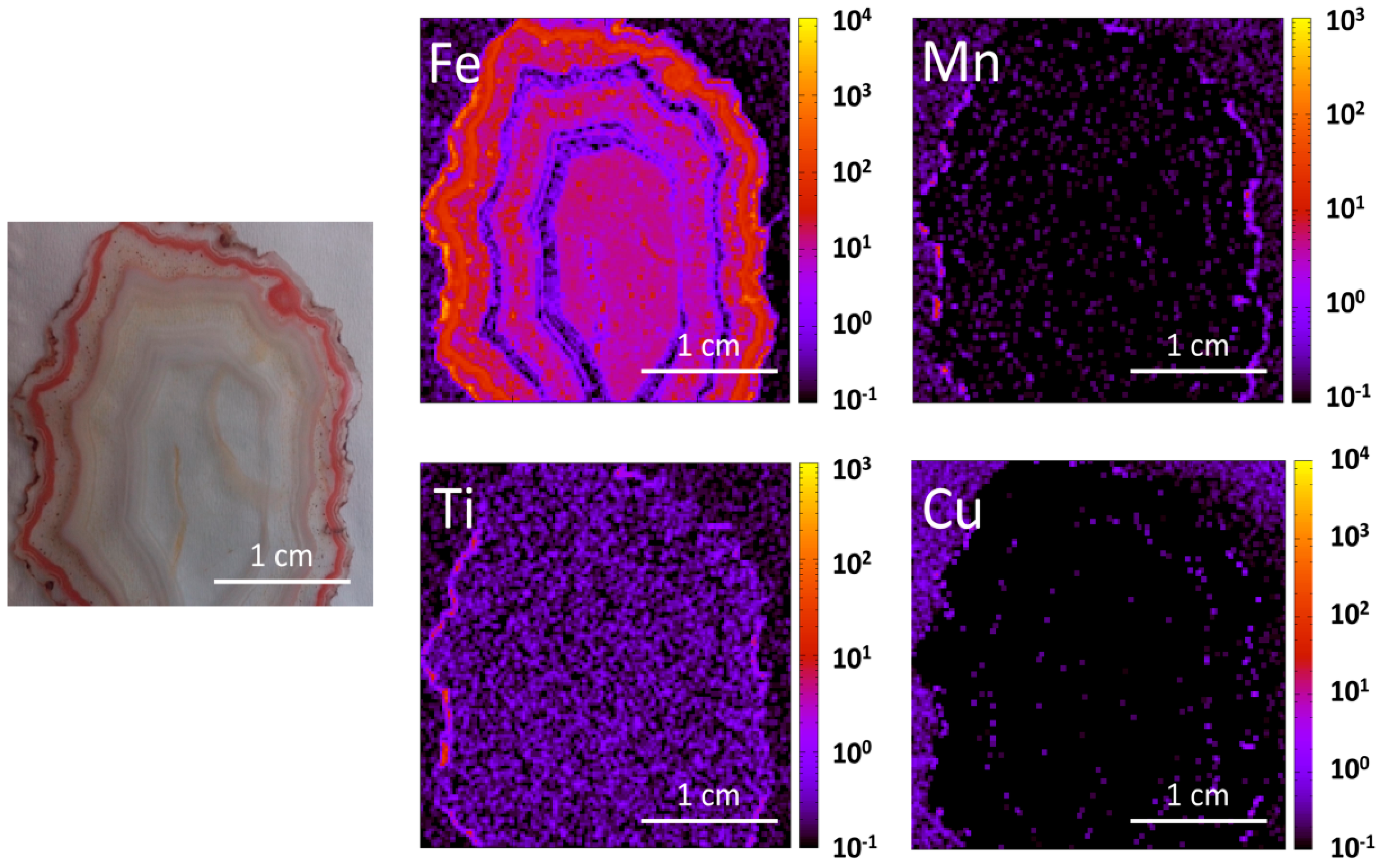

| Band (cm−1) | Assignment | References |
|---|---|---|
| 223, 245, 290, 408, 498, 609, 1320 | hematite | [18] |
| 1320, 1585 | carbonaceous matter | [19] |
| 1085 | carbonates (possibly calcite) | [23] |
| 297, 384, 415, 548, 680, 997, 1298 | goethite | [18] |
| 141, 443, 610 | rutile | [22] |
© 2016 by the authors; licensee MDPI, Basel, Switzerland. This article is an open access article distributed under the terms and conditions of the Creative Commons Attribution (CC-BY) license (http://creativecommons.org/licenses/by/4.0/).
Share and Cite
Natkaniec-Nowak, L.; Dumańska-Słowik, M.; Pršek, J.; Lankosz, M.; Wróbel, P.; Gaweł, A.; Kowalczyk, J.; Kocemba, J. Agates from Kerrouchen (The Atlas Mountains, Morocco): Textural Types and Their Gemmological Characteristics. Minerals 2016, 6, 77. https://doi.org/10.3390/min6030077
Natkaniec-Nowak L, Dumańska-Słowik M, Pršek J, Lankosz M, Wróbel P, Gaweł A, Kowalczyk J, Kocemba J. Agates from Kerrouchen (The Atlas Mountains, Morocco): Textural Types and Their Gemmological Characteristics. Minerals. 2016; 6(3):77. https://doi.org/10.3390/min6030077
Chicago/Turabian StyleNatkaniec-Nowak, Lucyna, Magdalena Dumańska-Słowik, Jaroslav Pršek, Marek Lankosz, Paweł Wróbel, Adam Gaweł, Joanna Kowalczyk, and Jacek Kocemba. 2016. "Agates from Kerrouchen (The Atlas Mountains, Morocco): Textural Types and Their Gemmological Characteristics" Minerals 6, no. 3: 77. https://doi.org/10.3390/min6030077





